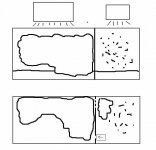A
Anonymous
Guest
I was thinking. One of the biggest downsides to reefkeeping (other than cost  ) is the diligent maintainence & monitoring required. Reefs require daily feedings and inspections, making, for example, travelling for several days difficult and worrisome. We can do a lot to automate the reef equipment, however not only is this even more expensive, but it's more complex & risky in regards to breakdowns, malfunctions, or other problems. Whenever I'd leave for more than a day, I'd be worrying about the reef - not only about the health of the inhabitants, but about potential catastrophic failures such as failure of the overflow system resulting in flooding & pump burnout, or possibly some sort of electrical fire.
) is the diligent maintainence & monitoring required. Reefs require daily feedings and inspections, making, for example, travelling for several days difficult and worrisome. We can do a lot to automate the reef equipment, however not only is this even more expensive, but it's more complex & risky in regards to breakdowns, malfunctions, or other problems. Whenever I'd leave for more than a day, I'd be worrying about the reef - not only about the health of the inhabitants, but about potential catastrophic failures such as failure of the overflow system resulting in flooding & pump burnout, or possibly some sort of electrical fire.
So I think the holy grail of reefkeeping would be a simple, self-contained system which requires little maintainance, giving the reefkeeper the freedom he deserves - for example, the freedom to go on vacation for a few weeks, worry-free. Enter The Once-a-Month Intervention Reef.
Enter The Once-a-Month Intervention Reef.
The concept is this: a self-contained, sealed reef system where the only inputs are light & electricity, and the only maintainance is a once-a-month water change, feeding, and pruning. So, once a month you open up the cover, do a water change, do some pruning, and drop in some food, close the cover, and that's it until next month.
My concept model is a 20 gallon long glass tank, divided by plexiglass into the reef section & a refugium section. Water is circulated between the two by a small powerhead. A heater will also be placed in the refugium section. a plexiglass cover will be placed over the top of the aquarium to prevent evaporation & gas exchange.
The main reef section will be light by a 250W HQI, and the refugium by a smaller bulb on reverse-daylight time.
The main reef section with have large amounts of live rock, with a small open area. Fauna will be one smallish fish (say a royal gramma) and corals. The refugium will contain some rock & macroalgea. A sandbed will extend throughout.
Presumably the large amounts of live rock, sand bed, and refugium will provide enough microfauna to feed the fish.
So what do you think... Is a once-a-month concept feasible at all? What problems do you see with this? Would this be a difficult-to-balance system, or would the light bio-load coupled with heavy sand & rock capacity make it easy?
So I think the holy grail of reefkeeping would be a simple, self-contained system which requires little maintainance, giving the reefkeeper the freedom he deserves - for example, the freedom to go on vacation for a few weeks, worry-free.
The concept is this: a self-contained, sealed reef system where the only inputs are light & electricity, and the only maintainance is a once-a-month water change, feeding, and pruning. So, once a month you open up the cover, do a water change, do some pruning, and drop in some food, close the cover, and that's it until next month.
My concept model is a 20 gallon long glass tank, divided by plexiglass into the reef section & a refugium section. Water is circulated between the two by a small powerhead. A heater will also be placed in the refugium section. a plexiglass cover will be placed over the top of the aquarium to prevent evaporation & gas exchange.
The main reef section will be light by a 250W HQI, and the refugium by a smaller bulb on reverse-daylight time.
The main reef section with have large amounts of live rock, with a small open area. Fauna will be one smallish fish (say a royal gramma) and corals. The refugium will contain some rock & macroalgea. A sandbed will extend throughout.
Presumably the large amounts of live rock, sand bed, and refugium will provide enough microfauna to feed the fish.
So what do you think... Is a once-a-month concept feasible at all? What problems do you see with this? Would this be a difficult-to-balance system, or would the light bio-load coupled with heavy sand & rock capacity make it easy?






